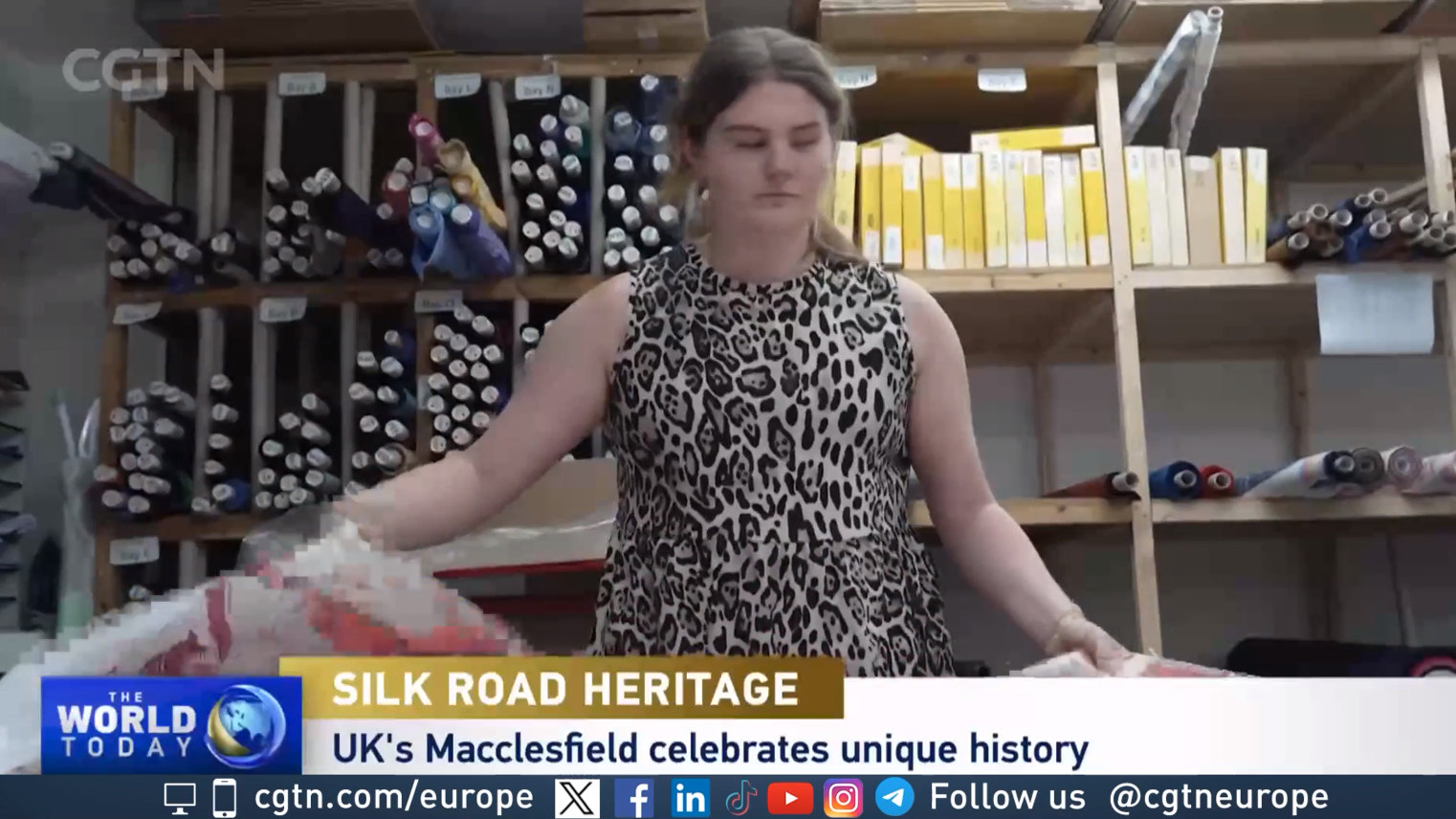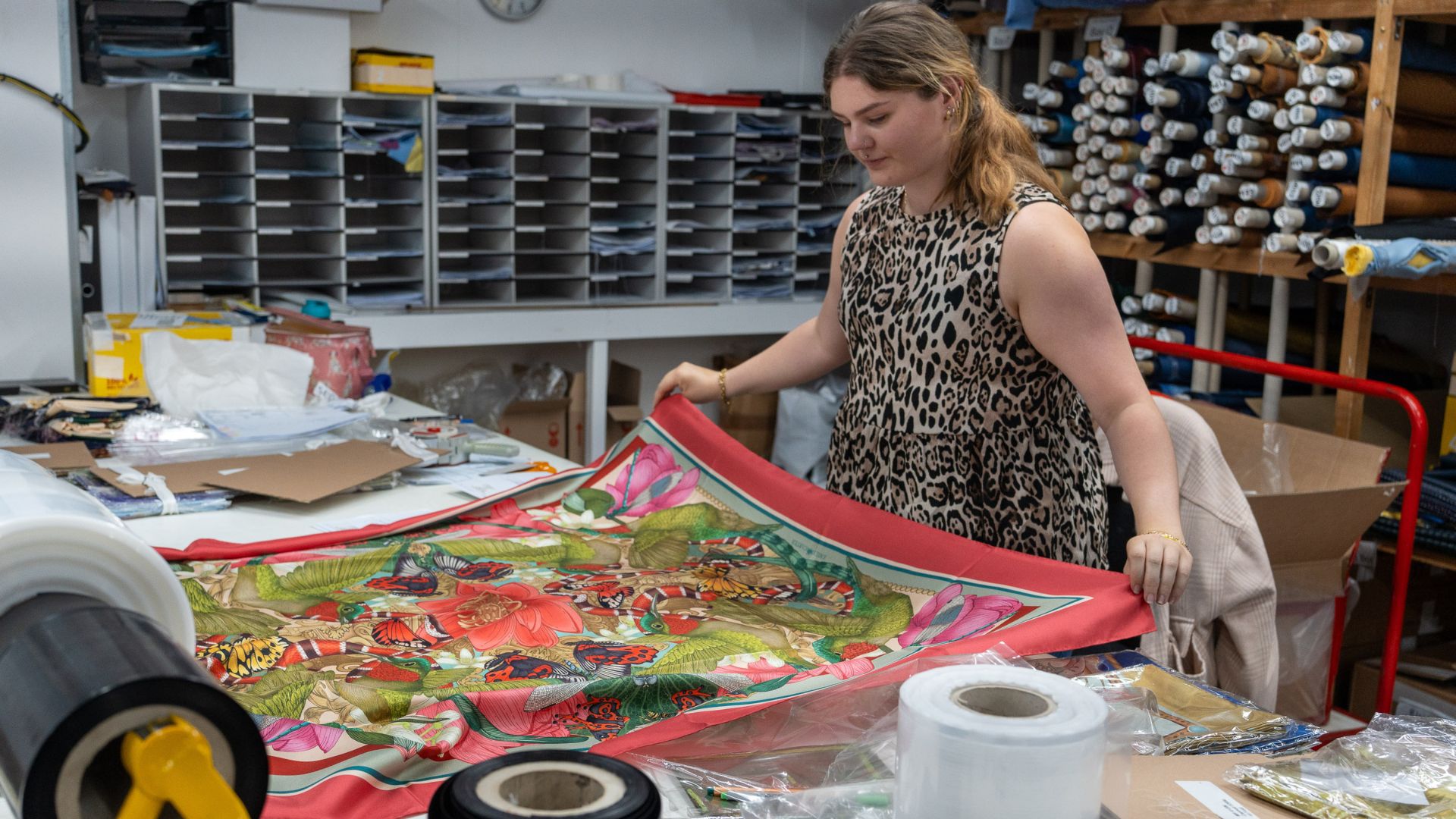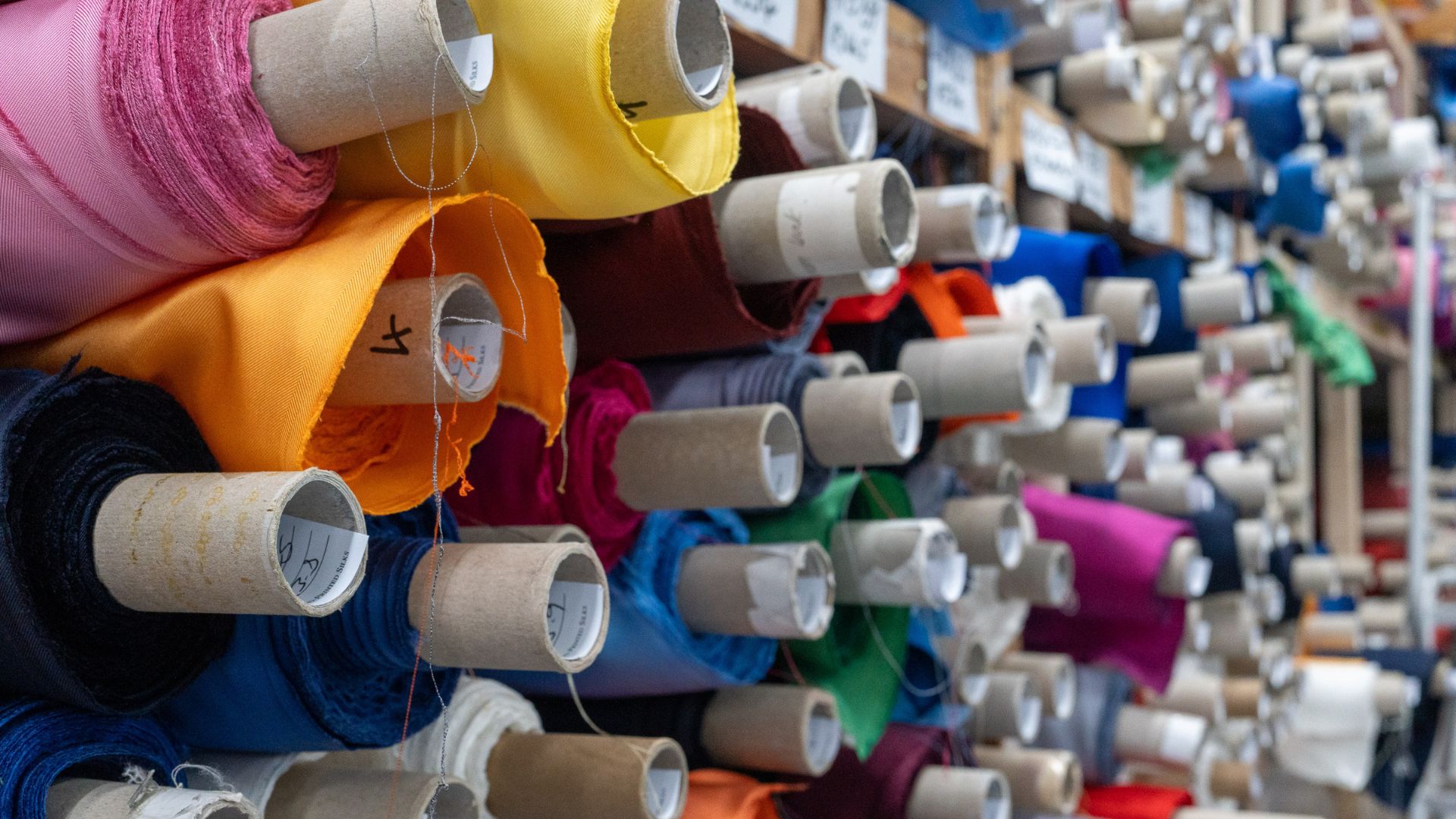02:59

WATCH: Michael Voss heads to Macclesfield, otherwise known as Silk Town
For centuries China's major export to Europe was fine silk - along the ancient Asian trade route known as the Silk Road. Two hundred years ago Britain was a major importer with its silk industry centered around the north-western town of Macclesfield, known then as the 'Silk Capital of England.'
It's a tradition which almost died out but today Macclesfield is trying to keep the heritage alive, while adapting to modern times.
Adamley Textiles is one of the last remaining companies here producing printed silk fabric and accessories.

A fine silk scarf made at Adamley Textiles in Macclesfield. /CGTN
A fine silk scarf made at Adamley Textiles in Macclesfield. /CGTN
Its core business involves using traditional methods to dye and print silk fabrics for women's and men's apparel.
Silk screen printing is a slow, costly and laborious process that has changed little over the centuries.
Adamley is famous for its bespoke hand-printed silk ties which can sell for between two hundred and a thousand dollars each. Its main market is Italy, along with famous tailors in London's Savile Row.
Tro Manoukian is the CEO of Adamley Textiles and takes pride in being part of the old Silk Road.
READ MORE
Six decades after a tragedy, Welsh fear it could happen again
More than 1,200 migrants land on Lampedusa in 24 hours
Hallucinate: Cambridge Dictionary's AI-inspired Word of the Year
"The connection to China really is that 100 percent of our silk now comes from the country, from one particular region called Zhejiang, because of the quality of silk that comes from those areas. We can't buy better from anywhere else," Manoukian said.
For centuries England was famous for its woven cloths, originally based around cottage industries where people had small looms in their homes.
With the Industrial Revolution weaving became mechanised with great mills and factories appearing, particularly in the north of the country. The nearby city of Manchester became the cotton capital in the 19th century, known then as Cottonopolis. In Macclesfield it was silk.
The cool, damp, wet climate was perfect for silk production. The river Bollin ran through the town, allowing factories to be powered by water wheels, while the water was soft enough for dyeing the silk. A recently built canal meant they could export their products to London and beyond.

A stockpile of silk at Adamley Textiles. /CGTN
A stockpile of silk at Adamley Textiles. /CGTN
The first silk factory opened in 1745, making silk buttons. By the end of the century weaving was introduced. At its peak in the 1820's there were 71 silk factories in Macclesfield, said to be the world's largest producer of finished silk.
Those days are over but Macclesfield is still known as Silk Town and remains proud of its heritage.
There's a Silk Museum, the local radio station is Silk FM, and the football team Macclesfield FC are nicknamed the Silkmen.
In addition, one of the pubs is called the Silk Trader, along with a Silktown barbers shop and a Silk Retail Shopping Centre, while a main road in an out-of-town is 'The Silk Road'.
In a bid to attract more tourists to the town, the local authorities persuaded the United Nations World Tourist Organization to add Macclesfield to its list of silk road locations.

The town's silk heritage is everywhere. /CGTN
The town's silk heritage is everywhere. /CGTN
The local visitor information center now sells Silk Road tea towels but it's not all looking back to the past.
Jeff Coghlan runs the Matmi New Media Design Company. Part of its business is working on modern day applications to make the most of the historic silk designs.
"We realised that there were some beautiful old patterns in Macclesfield that are just rotting in cupboards in the old Silk Museum and the industry. And we thought why can't we just bring them back to life, maybe not as silk but as other products: wallpaper, pictures, furnishings, other textiles?" Coghlan said while showing off some of the greeting cards they produce.
The Adamley silk factory has also embraced modern technology, including a state of the art digital printing machine.
But it's the hand printed silk which remains its core business, helping keep the Silk Road traditions alive.
Subscribe to Storyboard: A weekly newsletter bringing you the best of CGTN every Friday